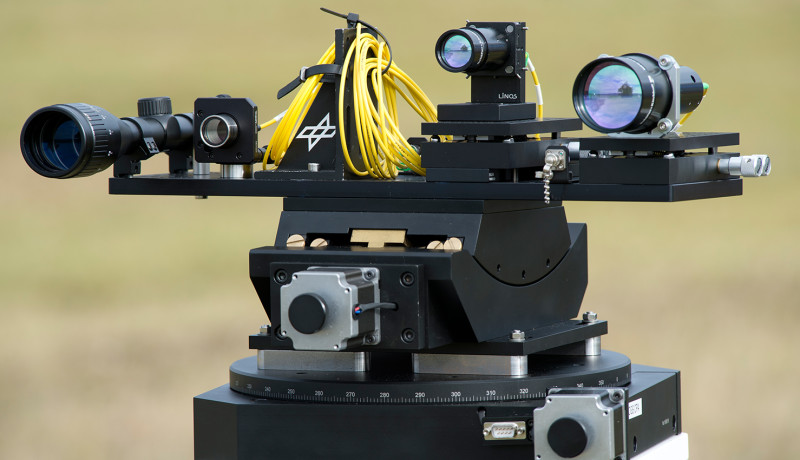45 DVDs per second transmission rate achieved with laser light
November 07, 2016
on
on

Within the project THRUST (Terabit-throughput optical satellite technology), scientists from the German aerospace research center DLR have developed an innovative transmission technology for the next generation of communications satellites. The idea was to connect the satellites to the terrestrial Internet by means of a laser link, with the goal of multi-terabit data rates. Communication with the users takes place via microwave connection in the Ka band (26.5–40 GHz), a widespread frequency band in satellite communications.
A whopping data transmission rate of 1.72 terabit per second was achieved over a distance of more than 10 kilometers of open space. Those terabits are the equivalent of 45 DVDs per second.
After the feasibility proof in the worst case scenario, the focus is now on the stability of the optical link. In the next phase of the DLR research, measurements will be performed to better understand the influence of the atmosphere and establish a stable communication path. The quality of the data connection depends to some extent on the properties of the atmosphere. The team verified earlier simulation results on a laser transmission path between Weilheim and Hohenpeissenberg, which happens to have a distance of 10.4 kilometers, and succeeded.
Is that a 9-pin RS232 connector I am seeing in the r/h lower corner?
A whopping data transmission rate of 1.72 terabit per second was achieved over a distance of more than 10 kilometers of open space. Those terabits are the equivalent of 45 DVDs per second.
After the feasibility proof in the worst case scenario, the focus is now on the stability of the optical link. In the next phase of the DLR research, measurements will be performed to better understand the influence of the atmosphere and establish a stable communication path. The quality of the data connection depends to some extent on the properties of the atmosphere. The team verified earlier simulation results on a laser transmission path between Weilheim and Hohenpeissenberg, which happens to have a distance of 10.4 kilometers, and succeeded.
Is that a 9-pin RS232 connector I am seeing in the r/h lower corner?
Read full article
Hide full article


Discussion (0 comments)